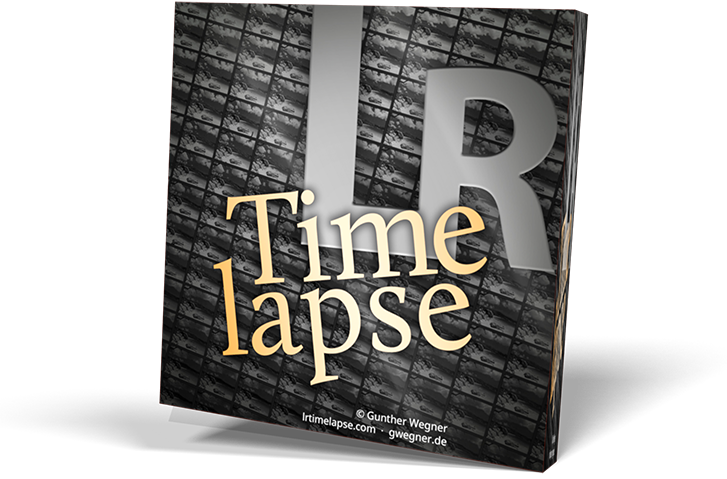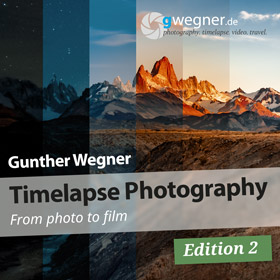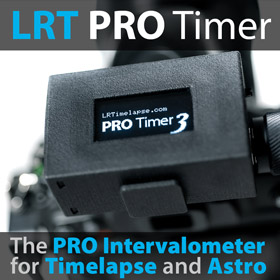Posts: 15
Threads: 5
Joined: Nov 2015
Workflow for 360 photos to create Timelapse
Posts: 11,339
Threads: 197
Joined: Feb 2011
As far as LRTimelapse goes, I'd transform the 360° images to rectilinear if they are in another format. Then you can do the editing. Make sure to use a reference area for deflickering as explained in my deflicker tutorial https://lrtimelapse.com/tutorial/
If the images are TIFF, convert them to DNG, as explained in my Expert Tutorial #4: https://lrtimelapse.com/tutorial/expert
Also make sure to not use any of the non-linear Lightroom Tool, as explained in my Expert Tutorial #5 on https://lrtimelapse.com/tutorial/expert - otherwise you'll get issues when stitching later.
If the images are TIFF, convert them to DNG, as explained in my Expert Tutorial #4: https://lrtimelapse.com/tutorial/expert
Also make sure to not use any of the non-linear Lightroom Tool, as explained in my Expert Tutorial #5 on https://lrtimelapse.com/tutorial/expert - otherwise you'll get issues when stitching later.
Posts: 3
Threads: 1
Joined: Feb 2021
What is meant with "360 photo" in this topic? A 360°x180° spherical image?
Even if you manage to take several of those on the same spot in a given time >>> stitch all the photos to several unique spherical 360x180 images >>> transform/export them to rectilinear (awkward image, but for processing purposes I understand it's necessary) >>> do the usual LRT editing >>> re-transform them to spherical photos: what viewer/program is able to display such a spherical timelapse? And why should one do this, since a we can only see one part/angle at a time of a 360x180 photo?
Even if you manage to take several of those on the same spot in a given time >>> stitch all the photos to several unique spherical 360x180 images >>> transform/export them to rectilinear (awkward image, but for processing purposes I understand it's necessary) >>> do the usual LRT editing >>> re-transform them to spherical photos: what viewer/program is able to display such a spherical timelapse? And why should one do this, since a we can only see one part/angle at a time of a 360x180 photo?
Posts: 9
Threads: 1
Joined: Aug 2020
@rruiz It depends on how you're capturing the images.
Using a two lens, one shot camera like the GoPro Fusion or Ricoh Theta you can capture in raw and then process / convert two different ways: either pre-stitching, treating each lens on a frame by frame basis, or post-stitching on the equirectangular images (which may benefit from a reprojection to another format such as stereographic to avoid seams in the sky area) with some post LRT compositing with the original.
If shooting more traditionally using a still DSLR / mirrorless camera with a fisheye, then stitching and processing the equirectangular image (again, potentially reprojected) is a better option than processing the multiple component fisheye images.
Either way, the file sizes and conversion / reprojection steps required mean this is a time, processor and storage intensive process. But done right the results can be very pleasing.
PS. I'd suggest a photo rather than video based capture if using a one shot camera so the resolution and dynamic range is higher. More work but much better quality…
Using a two lens, one shot camera like the GoPro Fusion or Ricoh Theta you can capture in raw and then process / convert two different ways: either pre-stitching, treating each lens on a frame by frame basis, or post-stitching on the equirectangular images (which may benefit from a reprojection to another format such as stereographic to avoid seams in the sky area) with some post LRT compositing with the original.
If shooting more traditionally using a still DSLR / mirrorless camera with a fisheye, then stitching and processing the equirectangular image (again, potentially reprojected) is a better option than processing the multiple component fisheye images.
Either way, the file sizes and conversion / reprojection steps required mean this is a time, processor and storage intensive process. But done right the results can be very pleasing.
PS. I'd suggest a photo rather than video based capture if using a one shot camera so the resolution and dynamic range is higher. More work but much better quality…
Posts: 9
Threads: 1
Joined: Aug 2020
@macdonkey
360 video (including timelapse footage) can be viewed on platforms like YouTube and Facebook, which means very widespread potential audiences for content. And as it's a general underused and effective medium, it's eye-catching and can drive much greater engagement than traditional flat video. Sure, viewers may only be able to look in one direction at once, but audiences love the ability to look around some scenes as the view can be spectacular in more than one limited field of view. Take some time to view some 360 time-lapse material on YouTube and you'll find some incredible and inspiring examples.
Also 360 video can be captured and then cropped or reframed in post; allowing the filmmaker to utilise pans, zooms, reprojections and other creative techniques which a 'flat' video shot in a static position would not be able to do. It's another tool in the toolkit of a creative filmmaker, used well it can yield impressive and immersive results!
360 video (including timelapse footage) can be viewed on platforms like YouTube and Facebook, which means very widespread potential audiences for content. And as it's a general underused and effective medium, it's eye-catching and can drive much greater engagement than traditional flat video. Sure, viewers may only be able to look in one direction at once, but audiences love the ability to look around some scenes as the view can be spectacular in more than one limited field of view. Take some time to view some 360 time-lapse material on YouTube and you'll find some incredible and inspiring examples.
Also 360 video can be captured and then cropped or reframed in post; allowing the filmmaker to utilise pans, zooms, reprojections and other creative techniques which a 'flat' video shot in a static position would not be able to do. It's another tool in the toolkit of a creative filmmaker, used well it can yield impressive and immersive results!





